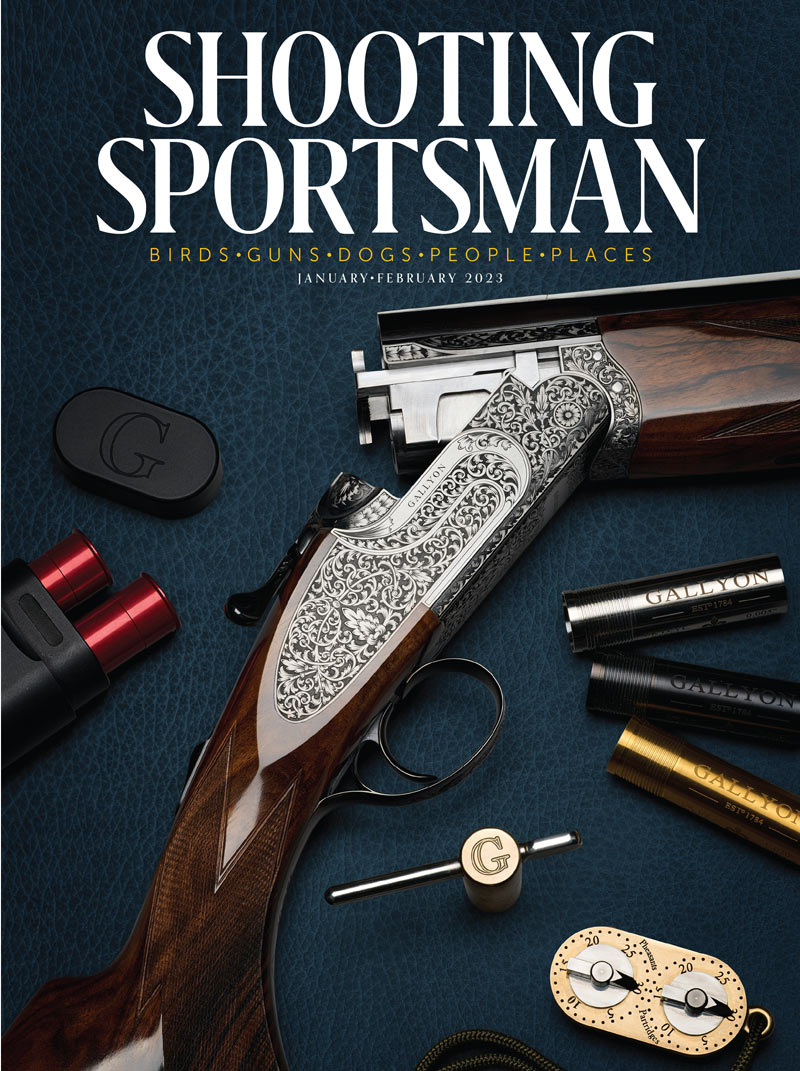It’s time again for my annual sharing of letters with issues and answers of broad interest to SSM readers. Following is a sample of the many correspondences I received this past winter and spring.
I recently purchased a 1919 Fox Sterlingworth with 2½" chambers. I am considering reloading 2½" hulls using roll crimping. People have told me I can reload the shorter roll-crimped shells using 2¾" data for standard crimped shells. They say the roll crimp on the shorter shell uses less of the hull and everything will fit and that the pressure and ballistics will be the same. Is this true, and would it be safe?
Absolutely not! Yes, some 2¾" fold-crimp recipes will fit in some 2½" hulls when they are roll-crimped. But it is not true at all on the ballistics claim. This can be confirmed by pressure-velocity testing at any SAAMI-compliant ballistic lab. Packing a 2¾" load recipe into a 2½"-or-shorter shell, even though it will fit, will raise pressure—and usually above SAAMI max-pressure specs for the shorter shell and gauge in question. This is due to the lesser volume in the shorter shell, because pressure rises as volume decreases. So don’t do it.
It’s amazing the number of know-it-alls who have no training or work experience in the shotshell/shotgun field (especially ballistic labs) dispensing this kind of dangerous, unproven information as if it were a safe, accepted practice. Be very careful of such amateur advice.
I and fellow Minnesota shooters have been experiencing problems with the crimp folds on both our reloaded and factory-new shells splitting out sooner and burning more on the exterior than we remember in past years. [The reader then reported the factory-load brand and his reloading recipe.] Your thoughts, please.
There is nothing wrong with your reloading recipe or your American-made factory target load. But your factory-load brand has undergone a major production and plastic change in its hulls in the past 10-plus years. In general that new hull formula hasn’t proven to reload as many times as the old hull formula.
The biggest culprit, though, is that you are reporting this problem manifesting itself mainly during the winter—i.e., cold in Minnesota. In my experience, the main issue to watch in climates where winter nights frequently get down below freezing is how ammunition is stored. My shotgun shells are stored at room temperature always. They are then transported in a warm vehicle. They are kept warm while waterfowl hunting by keeping a box dumped loose in my hunting-coat pocket, which is worn inside my chest waders so the shells never get wet or cold.
Because in the US pheasants are often taken with going-away-angle shots, it requires larger steel pellets to penetrate up through the birds to the vital organs.
Never store plastic-hull loaded shotshells in a cold (especially if unheated) garage, basement or outbuilding or in the “trunk” of a vehicle if you’re going to shoot them soon after in cold weather. If at a club shoot, store them in a locked ammo container inside the clubhouse and go back inside for each additional box you need. The point is that if shells are stored in the cold (below 45°F), the plastic of the hull and wad becomes stiffer, less flexible and more brittle. It is then much more vulnerable to splitting in the crimp folds during firing—greatly inhibiting the crimp area from folding outward and sealing on the inside of the chamber. This allows the burning gases to blow back between the outside of the crimp area and the chamber wall and causes the exterior burning you report.
Follow-up note from the same reader:
Tom, I think you’ve hit on the cause of our problem! It turns out that although I reload shells in a heated basement and keep most of them there, I always keep the case or two of shells I’m going to shoot next in the garage or in my car—all the time in Minnesota, in the winter. Many of us at our club shoot when it’s as cold as 10°.
I think that explains why the hulls don’t seal well once the temperature starts to drop. We don’t really have the facility in our clubhouse to bring our shells in, but I can store them at my house in a room-temperature-heated cooler and keep them in my car in the cooler when it gets cool/cold out. Note: I tried this regimen out, and it worked like a champ.
I’ve been studying your nontoxic-shot Lethality Table published by numerous state and federal agencies worldwide. I am wanting to switch to steel, and the only upland birds I shoot these days are pheasants and mourning doves. I see where you recommend No. 4 steel for turkeys but No. 3 or 2 for pheasants. Would steel 4s work as an all-around upland-bird pellet size except for doves?
The table does not present my recommendations. It’s my summary of the published findings as measured and documented in the several peer-reviewed shotgun lethality tests run in the US on various gamebirds from the 1960s through 2012. Test results found that steel No. 4s proved ineffective for taking pheasants and resulted in high wounding losses. Necropsies reveal that pheasants are tougher to kill than ducks, because in the US pheasants are largely taken as variations of going-away-angle shots, resulting in the gizzard and thighs having to be penetrated by pellets before the pellets can punch through to the heart and lungs. This takes big pellets in steel: No. 2s or 3s. Steel 4s work well on turkeys only because the target is the head and neck.
To consult with Tom Roster or to order his new Advanced Lead & Bismuth Shot Handloading Manual, his current HEVI-Shot and HW-13 reloading manual, or custom loading data, contact Tom Roster, 1190 Lynnewood Blvd., Klamath Falls, OR 97601; 541-884-2974, tomroster@charter.net.




